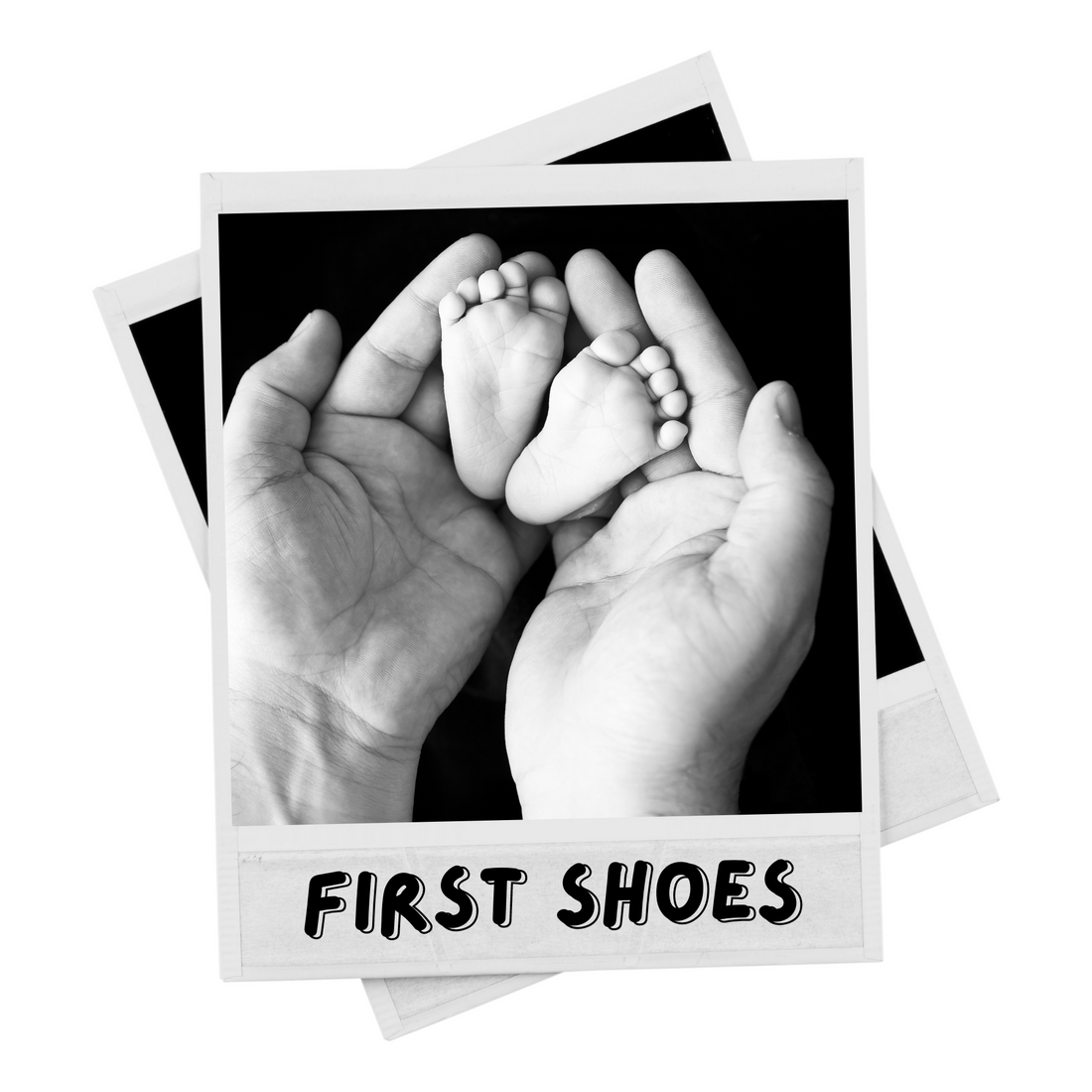Choosing a first shoe for a child is an exciting milestone in their development. As with all choices we make for our children, we want the best for their health. (And we get to buy shoes- hooray!)
It is widely accepted in the current medical literature that ‘barefoot is best’ in terms of optimum foot development.
Shoes in very young children have one primary function; protection of the foot from injury and infection.
So whilst it is vitally important to whip out those beautiful, sensitive feet and regularly expose them to the environment and its many, varied mediums and surfaces when possible, realistically those precious feet also need to be protected in some environments (small rocks, tan bark, temperature etc).

The development of foot arches typically occurs between ages 2 and 3 and has usually been established by 5.
A review of current literature concluded that young children should have a shoe as flexible as their own foot, with minimal cushioning and support. At a young (pre-school) age impact forces on feet are generally small and extra cushioning is unnecessary.

These early years are critical in ensuring optimum foot development. Foot length and width varies widely in young children (hello genetics!) and too small footwear that that does not adequately accommodate length or breadth, not just when your little one is standing still, but throughout their movements, may cause foot discomfort and displacement of load proportion which can lead to improper positioning of the flex zone (where the foot bends to push off during walking). This can potentially cause harmful stress on the foot in its most crucial period of development. Footwear that is stiff and/or compressive may cause loss of normal mobility of the foot, development of muscle weakness and could lead to potential structural deformity.
Looking at current best practice literature available it appears that those early walker shoes that are unstructured, allowing for the replication of barefoot walking and natural foot and arch development, whilst offering foot protection, are the best available for the health and development of young feet.

In my professional eyes the design of Paperkrane footwear currently addresses all these vital functions a shoe should have for the developing foot: Protective, unstructured with minimal padding.
And the fact that they are drop dead gorgeous is a very large bonus!!

References: Walther M, Herold, D Sinderhauf A, Morrison, R (2008) Children sport shoes—A systematic review of current literature: Foot and Ankle Surgery 14, 4, 180-189
Staheli, L, (1991) Shoes for Children: A Review. Pediatrics, 88, 2
Written by Abi Polus
Abi is a Musculoskeletal physiotherapist who has worked in both the public and private sectors in the UK and Australia. Abi currently works in a tertiary public hospital, and owns and manages her own private, expert opinion rheumatology physiotherapy practice. She is an internationally renowned expert in the musculoskeletal management of bleeding disorders. She has been an invited speaker at conferences around the world, a consultant on various musculoskeletal projects, and has been a grant recipient for research.

